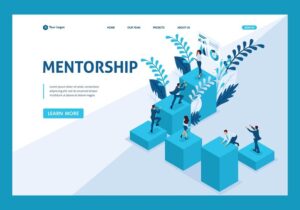Women’s Leadership Challenges

Women’s leadership challenges extend far beyond the glass ceiling. They are deeply rooted in societal norms and cultural expectations that shape what a leader “should” look like. Women often face implicit bias, where their authority and competence are questioned in male-dominated environments.
This not only limits individual growth but also hinders organizational performance. Research shows that diverse leadership teams drive innovation and higher results.
Another barrier women face is the dual burden of professional responsibilities and domestic expectations. Balancing these pressures often leads to burnout, but it also gives rise to new perspectives on collaboration, empathy, and resilience—qualities that strengthen leadership.
Gender Bias in the Workplace

Gender bias is one of the most common women’s leadership challenges. It often shows up subtly:
-
Women’s contributions being undervalued in meetings.
-
Women being interrupted more often than men.
-
Limited recognition for women’s expertise.
Bias also affects recruitment, promotions, and salary negotiations. Women risk being seen as “too aggressive” or “not assertive enough,” forcing them to downplay ambitions.
Solution: Companies must dismantle workplace bias by promoting inclusivity, giving equal recognition, and creating safe spaces for diverse voices.
The Confidence Gap Among Women Leaders
The confidence gap prevents many women from stepping fully into leadership. Doubts about how they are perceived can hold them back from pursuing promotions or voicing opinions.
This is fueled by systemic bias, but also by internalized pressure to fit societal norms.
Solution: Encouraging women to embrace their achievements, coupled with mentorship and allyship, can close the gap and promote stronger representation in leadership roles.
Work-Life Balance Struggles for Women

Balancing career demands with domestic expectations is one of the toughest leadership challenges for women. Many women feel guilty whether they are focusing on work or family, often leading to burnout.
Solution: Flexible work arrangements, remote options, and supportive policies are essential. Work-life balance should not be a perk, but a core part of organizational culture.
Networking Barriers in Male-Dominated Fields
Networking opportunities often happen in male-centric spaces (like golf courses or bars), leaving women excluded from key connections.
Solution: Companies can create inclusive networking events, mentorship programs, and structured opportunities that focus on collaboration over competition.
Overcoming Stereotypes and Misconceptions
Stereotypes and misconceptions often act as invisible barriers, shaping our perceptions of others without us even realizing it. By actively challenging these preconceived notions, we can uncover the richness of individual stories that defy simplistic categorization. Engaging with diverse communities fosters empathy and understanding, allowing us to see beyond labels and recognize shared humanity. For instance, when we take the time to listen to personal narratives from those we might initially judge, we not only dismantle our biases but also enrich our own lives with fresh perspectives.
Moreover, embracing vulnerability plays a crucial role in overcoming stereotypes. When we share our own experiences, including our struggles and triumphs, we create a safe space for dialogue and connection. This openness encourages others to do the same, fostering an environment where misconceptions can be addressed head-on. By recognizing that everyone carries their own unique burdens and joys, we begin to break down the walls built by misunderstanding. In this way, collective growth becomes possible, paving the way for a more inclusive and compassionate society.
The Impact of Mentorship on Success

Mentorship serves as a catalyst for personal and professional growth, offering insights that often transcend formal education. A mentor’s wisdom, drawn from years of experience, can illuminate pathways that might not be apparent to someone navigating their career alone. This relationship fosters a unique environment where mentees feel encouraged to explore their ambitions while receiving constructive feedback that sharpens their skills and decision-making abilities. The art of mentorship lies in its reciprocal nature; mentors also gain fresh perspectives and renewed inspiration from their mentees, creating a dynamic exchange that fuels innovation.
Navigating Organizational Politics Effectively
Understanding and navigating organizational politics is not just about maneuvering through power plays; it’s about cultivating relationships and fostering a culture of collaboration. Effective political navigation requires emotional intelligence, allowing individuals to read the room and adapt their communication styles accordingly. Rather than viewing colleagues solely as competitors, reframe them as allies who can amplify your strengths. Building genuine connections can transform adversarial dynamics into cooperative partnerships, making it easier to align goals and drive initiatives forward.
Moreover, embracing transparency in your intentions can demystify your actions and mitigate suspicion. Sharing your objectives openly invites feedback and encourages others to join your cause, creating a sense of shared purpose. Keep in mind that understanding the underlying motivations of others can be a game-changer; when you recognize what drives your peers, you can tailor your approach to resonate with their interests, thus forging stronger alliances. Ultimately, mastering organizational politics is less about playing the game and more about rewriting the rules to create a supportive environment where everyone thrives.
Strategies for Empowering Women Leaders
Empowering women leaders requires a multifaceted approach that goes beyond traditional mentorship. One effective strategy is fostering networks that emphasize collaboration over competition. By creating spaces where women can share resources, experiences, and challenges, organizations cultivate a sense of community that strengthens individual leaders. This not only enhances personal growth but also amplifies collective influence, allowing women to navigate and dismantle systemic barriers more effectively.
Another key strategy lies in redefining success metrics within organizations. Instead of solely focusing on quantitative outputs, incorporating qualitative assessments can highlight the unique strengths women bring to leadership roles. This shift encourages a more inclusive evaluation process, recognizing attributes like emotional intelligence, adaptability, and collaborative skills that often go undervalued. By celebrating diverse leadership styles, organizations signal to women that their contributions are vital, inspiring them to step into leadership roles with confidence and assertiveness.
Moving Towards Gender Equality
Achieving gender equality is not merely a matter of fairness; it is essential for fostering innovation and sustainable development. Research indicates that diverse teams are more creative and effective, leading to better decision-making and problem-solving. When women participate equally in the workforce, economies grow more robustly — countries with higher gender equality often enjoy increased GDP growth rates. This economic empowerment goes beyond mere statistics; it transforms communities and uplifts entire generations.


Recent Comments